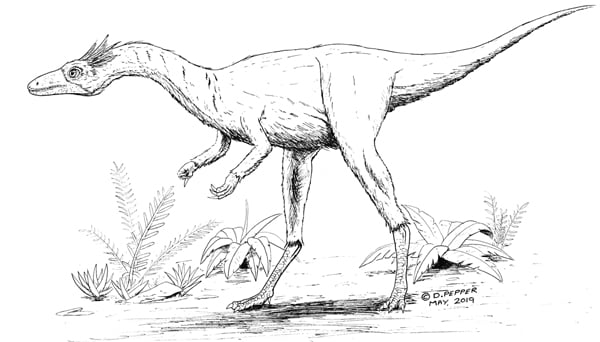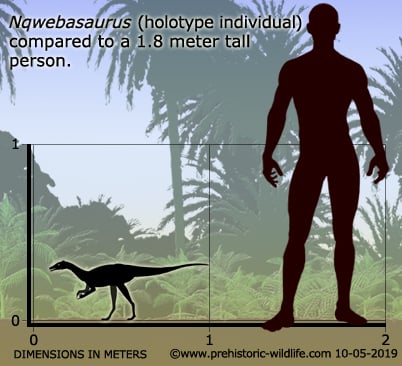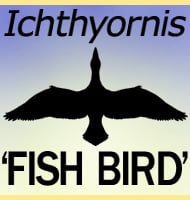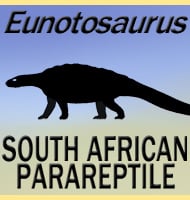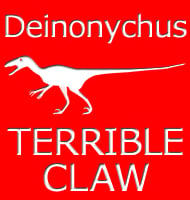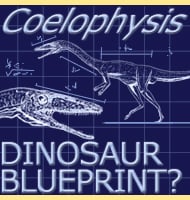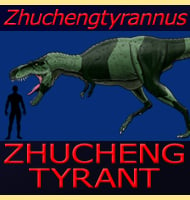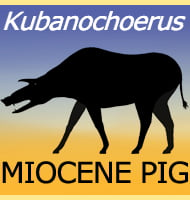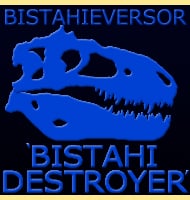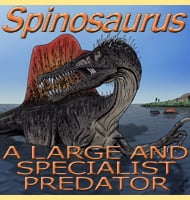In Depth
Nqwebasaurus was a small theropod from probably the early Cretaceous of Southern Africa, but exactly what kind has been hard to establish. Current thinking is that Nqwebasaurus was actually a primitive ornithomimosaur, since specimens of Nqwebasaurus seem to show fewer teeth in the jaws than those of other theropods. This would follow the pattern of tooth reduction seen in ornithomimosaurs with genera like Pelecanimimus possessing a number of teeth, Harpymimus having reduced teeth, to late Cretaceous forms like Gallimimus having no teeth, just a keratinous bill.
Like with ornithomimosaurs, the exact diet of Nqwebasaurus is uncertain. Nqwebasaurus was first envisioned as a meat eater, but the discovery of gastroliths, and reduced teeth count suggest that Nqwebasaurus may have been a herbivore. However it should be remembered that while gastroliths are usually attributed to herbivores, some predators are known to use them as well, particularly those that eat fish and invertebrates. There is also the large theropod Lourinhanosaurus that was also found with gastroliths in a position that suggests that they were inside the stomach of the living dinosaur. It is not unreasonable to suggest that Nqwebasaurus might have even been an omnivore.
Further Reading
- A new coelurosaurian dinosaur from the Early Cretaceous of South Africa, W. J. de Klerk, C. A. Forster, S. D. Sampson & C. F. Ross - 2000. - New information on Nqwebasaurus thwazi, a coelurosaurian theropod from the Early Cretaceous (Hauteriverian?) Kirkwood Formation in South Africa, J. N. Choiniere, C. A. Forster & W. J. de Klerk - 2012.
